Lindsay: Perfect! Okay, Mulholland. You liked it right?
J.C.: Wow!!! God, I love Lynch. Yes! Amazing.
Lindsay: I remember when I first watched it I literally finished the film and started it over again immediately. It’s just such a fantastic film and so dense…Okay, so take me through your very first thoughts when you finished the film for the first time. We’re you confused? Did it make sense? What did you think it was all about?
J.C.: 1st thought. Love that Ann Miller had a part in it (big old Hollywood buff here). 2nd thought: My brain hurts. Was the Diane that Naomi 1 & Laura found Naomi 2 from the end? How did Patrick’s diner guy know about the Being behind the diner, and what did that part mean? What about Michael J. Anderson’s character and why was he in a glass room?
Lindsay: Or the mafia scene! Angelo and the espresso!!
J.C.: Yes! I loved Angelo in that scene!!! But the Club Silencio part was so moving and beautiful. OMG!
Lindsay: Yes, it’s hard to watch that without getting teary. There is so much to talk about with this film. But let’s try to figure out the plot. Best as you can decipher, what is this movie about?
J.C.: Lost dreams. Losing yourself. Finding yourself. Facing fears.
Lindsay: It’s kind of the perfect setting for that too—Hollywood can seem like such a beautiful place but we know that’s not always the case…did you look up any of the theories about what the two parts of the film meant? (The first ~2/3 with Betty and Rita and then the last ~1/3 with Diane and Camilla?) Or did you come up with any theories on your own?
J.C.: I didn’t look at theories yet. I wanted to wait until we talked and wanted to think about it on my own.
Lindsay: Good going!! (You’re stronger than I am—I was looking up forum discussions on Dugpa like immediately after my second watch!) So…Betty and Rita. What did you think of their story and the whole investigation into Rita’s accident and the memory loss?
J.C.: The one underlying theory is that it’s all Rita’s dream from after the accident and that the box that is unlocked is her getting her memory back.
Lindsay: Oooh I like that a lot! I’ve always worked under the assumption that it’s Diane’s dream…
J.C.: Betty/Diane is the only one that’s connected to the old people and we see them with the being behind the diner
Lindsay: Right! (Scariest thing since BOB climbing over the couch towards Maddy isn’t it?!)
J.C.: Is the Being a metaphor of how Hollywood can take you in and make you less of yourself. Hence they’re shrunk and attack Diane from under the door, and get into the apartment.
Lindsay: I’ve wondered about that myself a lot. The Being feels like a metaphor for something, definitely. It certainly seems like it’s a part of what destroys Diane in the end. And the old couple are linked to it, most definitely. I think it’s very telling that they are helpful to Betty at the start of the film and menace Diane at the end.
J.C.: Hold on…I’m just thinking of something i wanted to bring up…Okay, so the elderly people. Helpful and caring in the beginning, menancing and scary at the end…kind of like the message to most when the go to Hollywood. Bright and new and then they get corrupted and sell out. So maybe the Betty at the beginning and the Diane at the end are the same. Just showing before and then after how they make you change your name. Like Norma Jean and Marilyn Monroe
Lindsay: I think you’re on to something. It feels like Betty is before she’s been chewed up and spit out of the Hollywood machine, and Diane is after.
J.C.: That’s my thought. And Rita/Camile is the establishment in both scenarios.
Lindsay: Some have suggested that Diane is the real character, and Betty is who she wishes she was, an idealized version of herself. Diane was naive and subjected to cruelty and can’t accept the reasons why she didn’t make it big, so she created the mob story in her head to explain how she didn’t get cast in the Sylvia North Story…Betty’s story is the story Diane tells herself to take away the pain of failure and rejection. What do you think?
J.C.: Hmm…but what if it was the opposite? What if the Betty story was the real one, and the switch just signifies the future, not a different timeline.
Lindsay: That could be too! So “Diane” is just a run down version of Betty who has changed her name?
J.C.: Yep. Remember both Lynch & Frost loved Marilyn Monroe’s story. Doesn’t Betty/Diane’s seem very Marilyn? Happy, young, and earnest. To down and out, falling apart, not all there. Sad tragic Hollywood story.
Lindsay: Very much so…
J.C.: Also the box could be Pandora’s box. That’s why Betty disappears. She’s the hope, the evil gets released.
Lindsay: So how does Rita/Camilla fit in? Are they the same person?
J.C.: Yes, I think the Rita/Camilla are the same person. She was going towards Adam’s house when the accident occurred. The accident also occurs where they walk up through the back way to the party.
Lindsay: The accident happens twice?
J.C.: No. The limo stops where the accident happened when Diane goes to the party. I’m saying Rita could’ve been going up to Adam’s house when the original accident happens.
Lindsay: Ah, yes…the accident Rita/Camilla was in happened earlier, and it just happens that Betty/Diane’s limo stops in the same place. Okay! I think I’m with you! Sorry, got confused there!! I was like “J.C.! You’re blowing my mind!!” Your theory definitely makes a lot of sense though!
J.C.: Well now that I’ve said that…what about the diner scene? Did Patrick’s character’s scene where he dies happen before he sees Diane or afterwards? That’s one of my confusion points.
Lindsay: I wonder about that too! It feels like it sets up some kind of narrative around dreams. That’s one of the reasons I’ve always liked the “It’s all Diane’s dream” theory. So many people who show up in the first 2/3 of the film are seen in the last 1/3 and play characters whom Diane meets and could then feasibly conjure up in a dream later on. But I don’t think Patrick shows up aside from that one scene (though his lunch partner does). So it’s all very confusing! But I like the idea that the Being (“in back of this place”…I love that line) is a representation of evil. Of Hollywood evil living near a dumpster (Or…dare I suggest it…a denizen of the Black Lodge? Covered in engine oil???
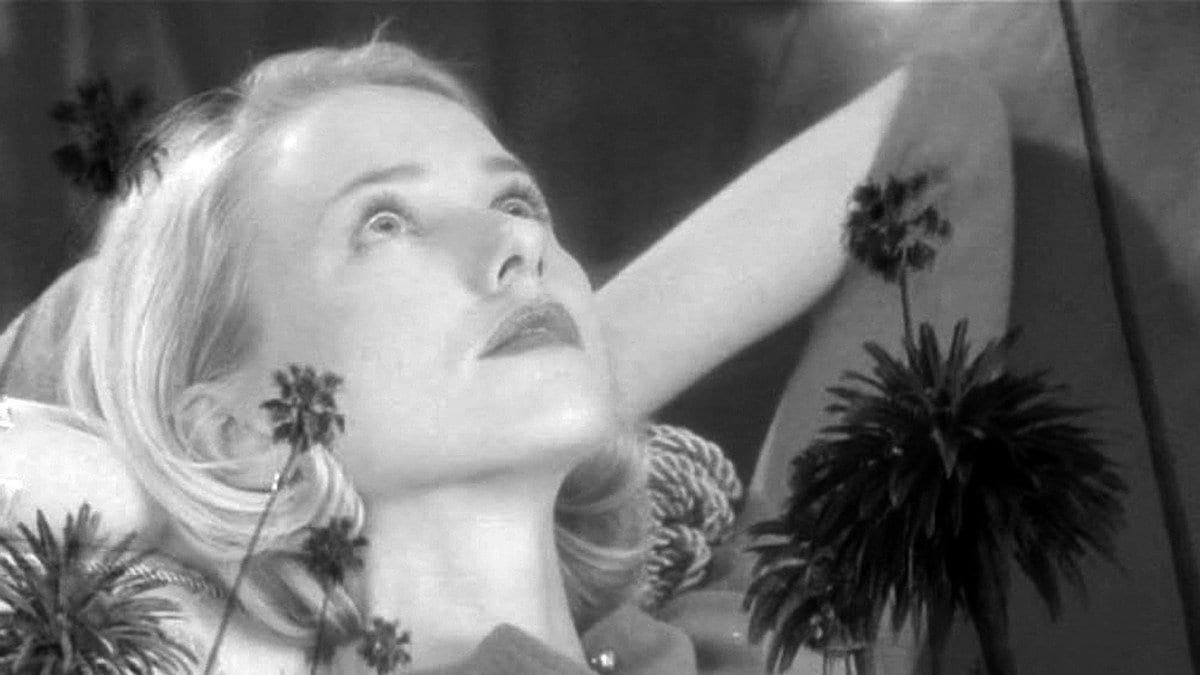
J.C.: Okay, let’s look at it from this perspective. Or could that Being be a starlet who didn’t have success and got eaten up and spit out and forgotten about? Or if you want to look at it from a dream perspective…the Sandman or something like that.
Lindsay: Yes! It could be!! How many people move to Hollywood hoping for stardom and end up broke or homeless? This could be a very extreme, stylized version of that story…The Being is definitely a very important part of the story
J.C.: Absolutely. How about the Cowboy?
Lindsay: I feel like the shadowy underbelly of Hollywood (the Michael J Anderson character and the men who terrorize Adam Kesher) are important too. And the Cowboy is fascinating as well! What’s your take on both of those elements?
J.C.: I think it’s a statement from David, about how the movie industry it crooked and paid for and that director’s you may think have creative control but like Adam is strong armed, “That’s the girl.” It’s more the machine than creativity.
Lindsay: Gosh, absolutely! I feel like they could have easily have been saying “Reveal Laura’s killer…”
J.C.: And I think the way that links with Betty/Diane is you have to be at the right place at the right time, or else you need to become part of the machine like the rest of them. Rita/Camille is the only one who is the same, but with memory loss, she’s just complacent. Afterwards, she’s just who she’s always been.
Lindsay: Yes. And that’s born out in so many statements about Hollywood. Talent doesn’t always mean success. It’s about who you know and being at the right place at the right time. And as some of these awful Hollywood abuse stories come out, we see the truth about the machine in broad daylight.
J.C.: Yes, we do.
Lindsay: I feel like Lynch is illustrating this in a highly metaphorical way, but this is the crux of the story he’s trying to tell.
J.C.: I was going to say this movie sheds light on the underbelly of Hollywood, like The New Yorker and the Post has recently. I think Lynch in a lot of ways thought of himself like Betty. New, ready to take on and become famous for something she loved. And then Angelo and Dan Hedaya come (the Italians) like Dino did to him in Dune, and he lost out and being able to be creative and what he wanted to do. So that’s who they signify. And the Cowboy could very well be someone he trusted, but who sold out too, and then all your left with is yourself. Beaten, bruised, and ready for death and to be reborn a legend.
Lindsay: Interesting take! Though I hope Angelo isn’t that terrifyingly picky about his coffee…Did you know that Lynch published a list of ten clues about MD? They came packaged with the DVD release, I think. To my knowledge, Lynch has never done that before with his films. Makes me wonder if these aren’t red herrings…Or maybe just a way to capitalize on Internet theorists!
J.C.: No, let me take a look and see if they fit in to my thoughts…
I will never try to understand why David Lynch creates film, or art, or television the way that he does. By god, I just want to sit back and fully enjoy the madness, creativity, and mind bending thoughts that flood over me when watching his work. This is the way I felt immediately after watching Muholland Drive. After the shock of watching two tiny elderly people all of sudden grow and then force Naomi Watts’s character, Diane, to suicide, my second thought was, “This is how David feels about Hollywood!” Wait, what J.C.? That’s what you got out of watching Mulholland Drive? Yes, again, I am not trying to say I have the man all figured out; not even Freud, if he was still alive, could figure that out. But I believe Mulholland Drive was David’s way of showing us the beauty and destruction that is Hollywood.

From the very beginning, we see the stage is set for this. The Jitterbug contest we first see, a bunch of people vying for a spot, a win, a chance to be in the spotlight; not unlike our young ingénue, Betty, wanting to make it big in Hollywood. Then the suspenseful thriller, the accident that “Rita/Camilla” is involved with and loses her memory from, is a metaphor for being railroaded in Hollywood and how you lose yourself and your memory of who you really are. You take on an alter ego, or go along with what is happening all around you. When we cross our two ladies, there is the fresh, innocence that Betty brings wanting to succeed in La La Land, and the doubt from Rita of remembering who she is and how she is tied into the world she is now in.
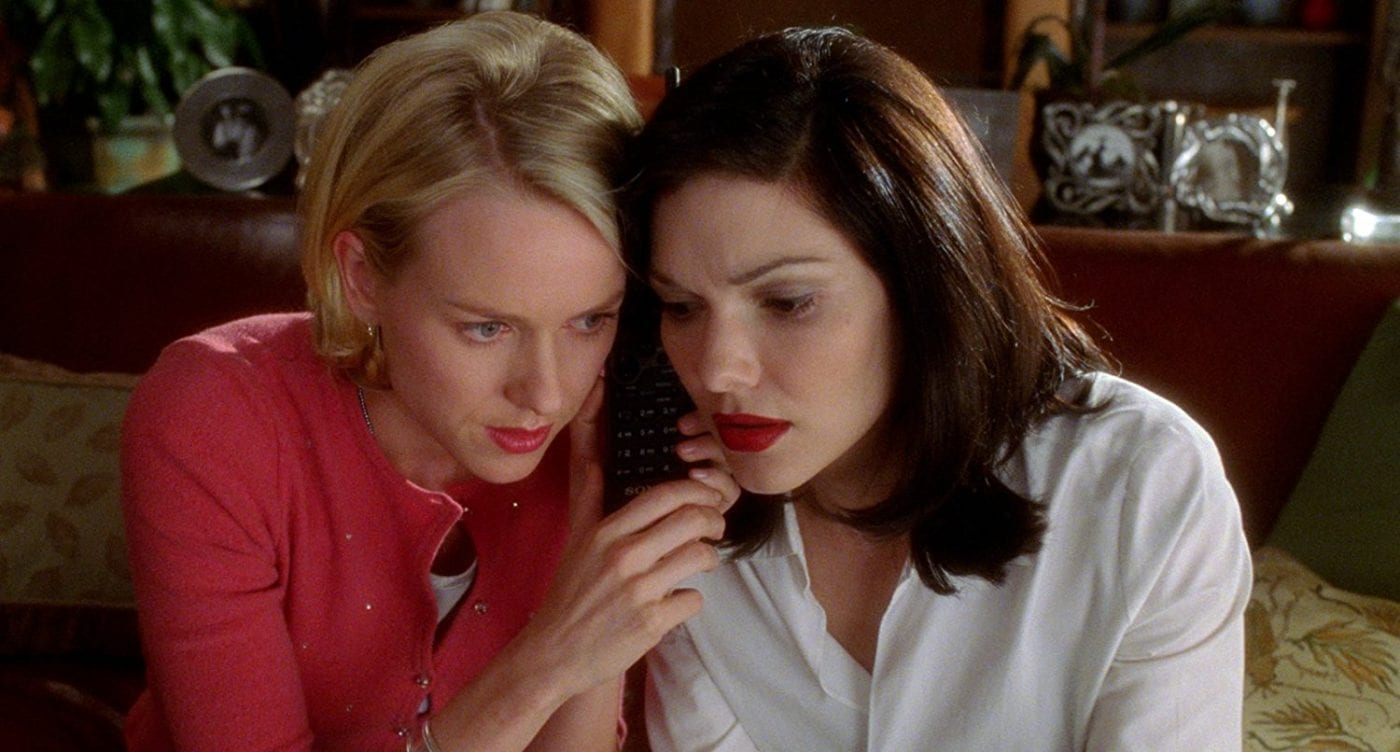
The other parts of the movie, Adam Kesher and his run is with the Castigliane Brothers and the Cowboy bring to mind the way in which David was told how he had to film Dune for a big time Italian producer. In a quote I found from David himself, he said, “I started selling out on Dune. Looking back, it’s no one’s fault but my own. I probably shouldn’t have done that picture, but I saw tons and tons of possibilities for things I loved, and this was the structure to do them in. There was so much room to create a world. But I got strong indications from Raffaella and Dino De Laurentiis of what kind of film they expected, and I knew I didn’t have final cut.” I also believe that Mr. Roque represents the difficulty it is to get to the “right” person in Hollywood. The person that controls all the puppet strings, the one that sits in their glass room and has a servant to take care of the money man; this is the old stereotype but very real happening during David’s early years in television and film.
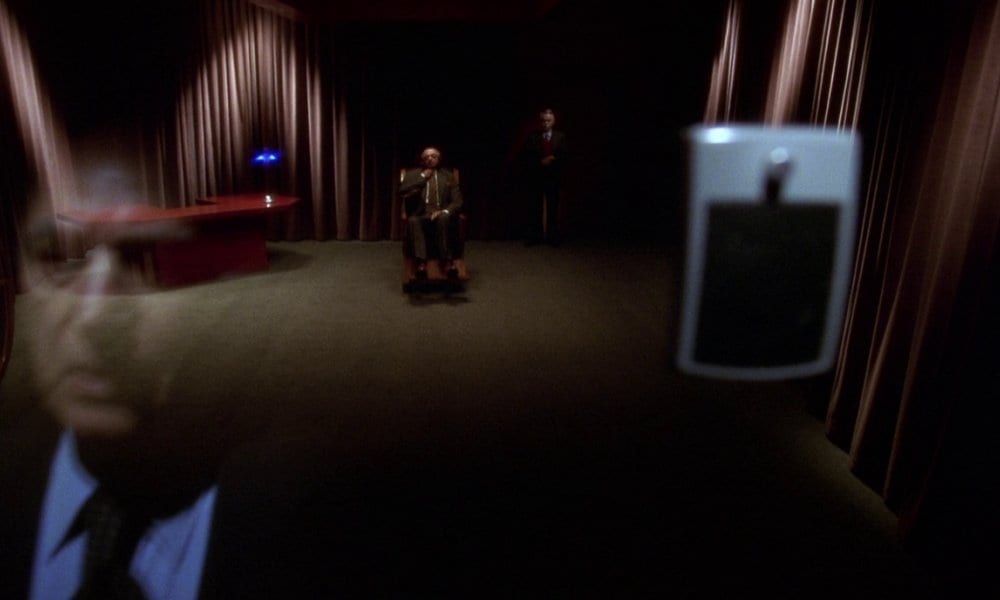
The next section I must touch upon is the absolutely heart wrenching performance of Rebecca Del Rio singing “Llorando”, a Spanish-language cover of Roy Orbison’s “Crying”. Oh my gosh, talk about taking your heart out of your chest and then stomping on it, and then kicking it down the street, and then having it get run over by a car. Beautiful, but in the moment between Rita/Camilla and Betty/Diane, your heart feels like it is about to explode. You feel the sadness. To me it felt as though all those dreams, the ones that Rita cannot remember, that high Betty was feeling from her audition ; the hope they had in each other, all of them are going to come crashing down. They do, as soon as Betty finds the Blue Box.
That blue box! Ugh! This is where many people (from theories I have read online) think the dream ends and reality has now arrived. I believe the blue box is a metaphor for Pandora’s Box. From Merriam Webster:
“The god Prometheus stole fire from heaven to give to the human race, which originally consisted only of men. To punish humanity, the other gods created the first woman, the beautiful Pandora. As a gift, Zeus gave her a box, which she was told never to open. However, as soon as he was out of sight she took off the lid, and out swarmed all the troubles of the world, never to be recaptured. Only Hope was left in the box, stuck under the lid. Anything that looks ordinary but may produce unpredictable harmful results can thus be called a Pandora’s box.”1
When Betty realizes the key opens the box, she forces Rita/Camilla to open and then we are thrust into a completely different world. The world where now, Diane is a washed up actress, spit out by the machine, a star that has faded. I don’t believe Betty and Diane are two different people, one in a dream and one focused in reality. I believe we are seeing the transition of a shiny, brand new ingénue to a worn out, unhopeful quasi-actress. Camilla, now regaining the memory of what and who she was, represents everything that makes Hollywood ugly. Diane thought she’d have it all. Success, love, fame and fortune, but she could not fight the same people that Adam Kesher tried to fight in the beginning. She did not play by the rules. Adam did, which is why we see he and Camilla together as end game. Lynch also shows us this when the “It” girl kisses Camilla at the dinner table. This scene, framed beautifully, shows all the players that used Diane as the pawn. If only she had drunk the Kool aid, she would still be her own “it” girl and in the A crowd.
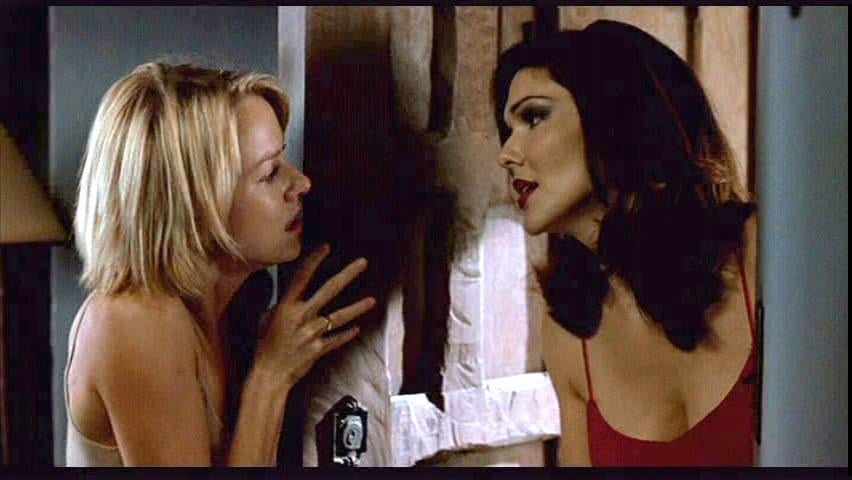
I think all this portrays how Lynch viewed the Hollywood machine after Dune, Twin Peaks, and the like. He was very disillusioned by fitting into the mold that he was supposed to fit in, “How to be successful in Hollywood!” He wanted complete control of what he was putting out and to stand behind his work, and how people perceived that work. This is where I think David is like Diane. He chose to take himself out of the rat race, and make films, art, and television on his terms, just as Diane chooses here own way out, her destiny is her death. On a final first viewing note (a more detailed delve and analysis from Lindsay Stamhuis about Mulholland Drive will be coming soon. Look for our series on Lynch, Thursdays in 2018), I have been wracking my brain wondering “How the Evil Hobo behind Winkie’s fits in to this entire thing?” I think that the Evil Hobo could be symbolic of what would happen if Diane did not commit suicide. It is the cycle of life in Hollywood, the new fresh “It” girl to the forgotten actress to the “nobody”; forgotten about. People forget who she was and now can only see a panhandling bum that terrorizes people’s dreams and becomes what they fear most, forgotten. I also think that since we see this creature with the box at the end that just like Pandora’s Box, all the evils have been released and the hope that we have seen inside of Betty, lost in Diane and the Evil Hobo is now stuck in the box and just remains there; where it will wait to see if it can prey on the next individual to come to Hollywood with a dream.

1 “Pandora’s Box.” Merriam-Webster.com. Merriam-Webster, n.d. Web. 29 Nov. 2017.


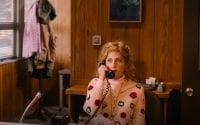

2 Comments
Leave a Reply